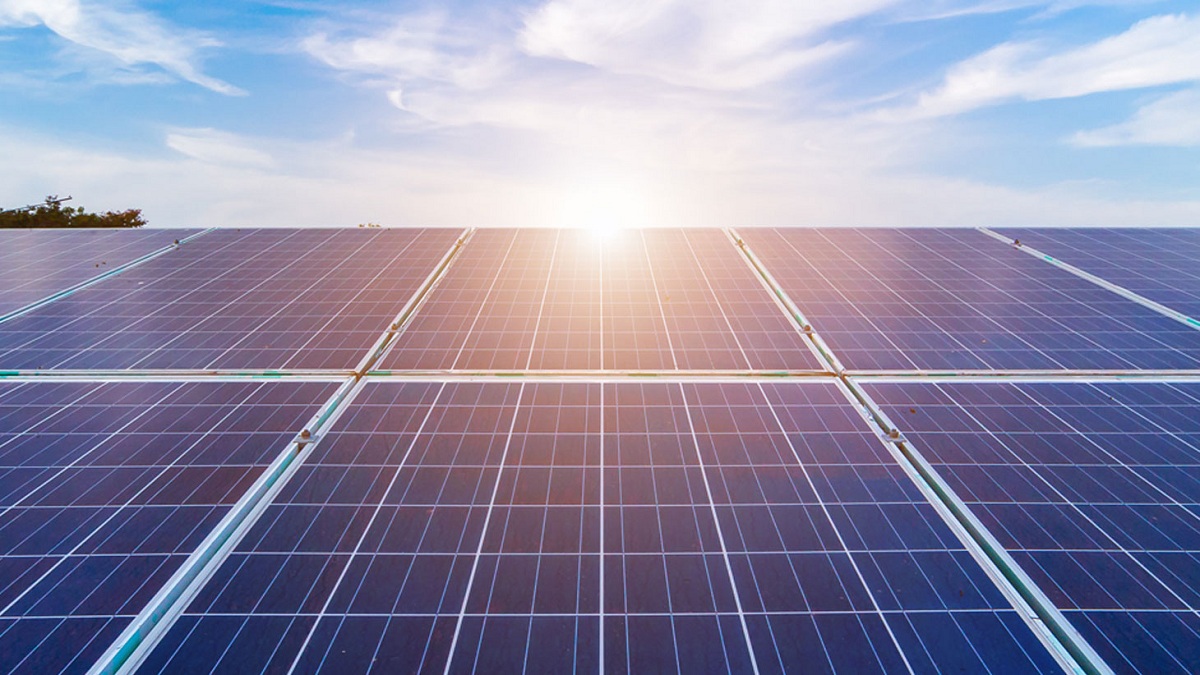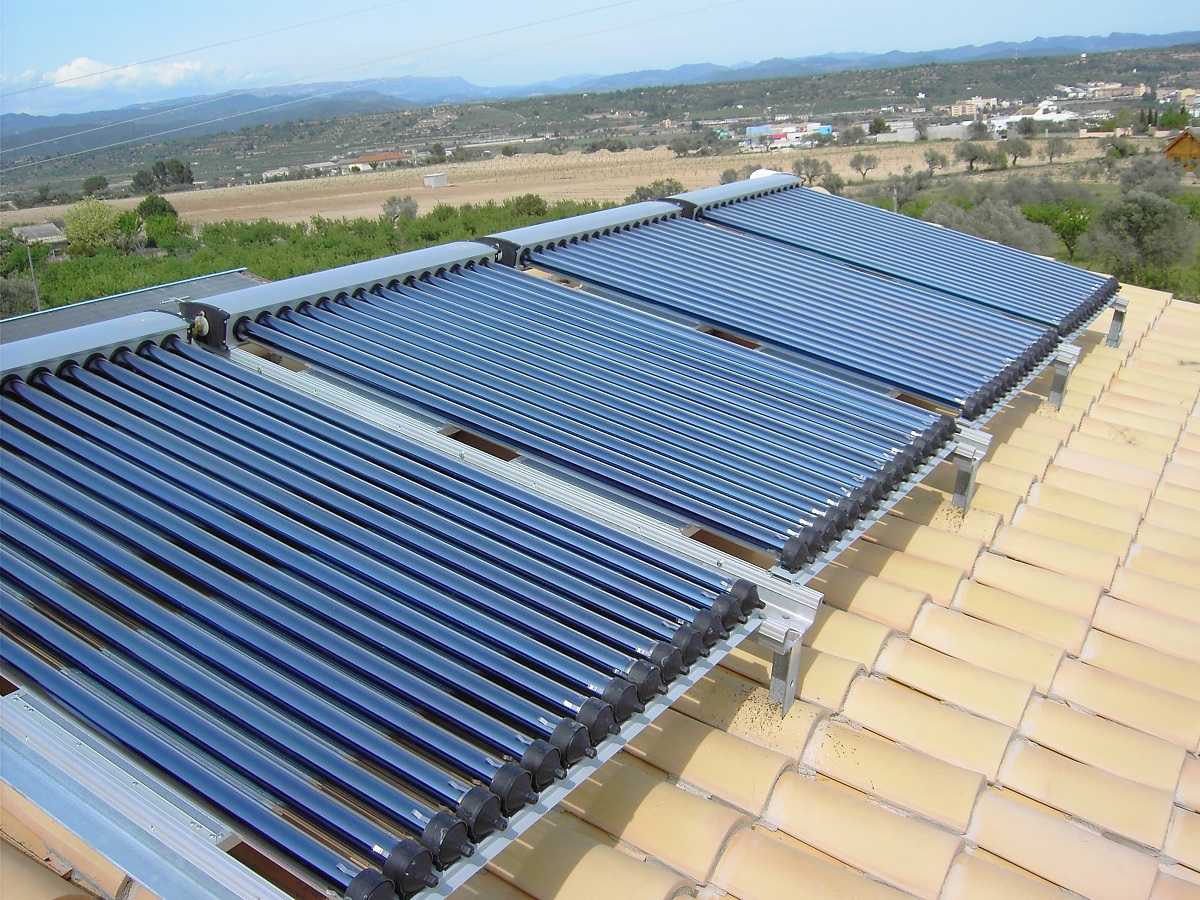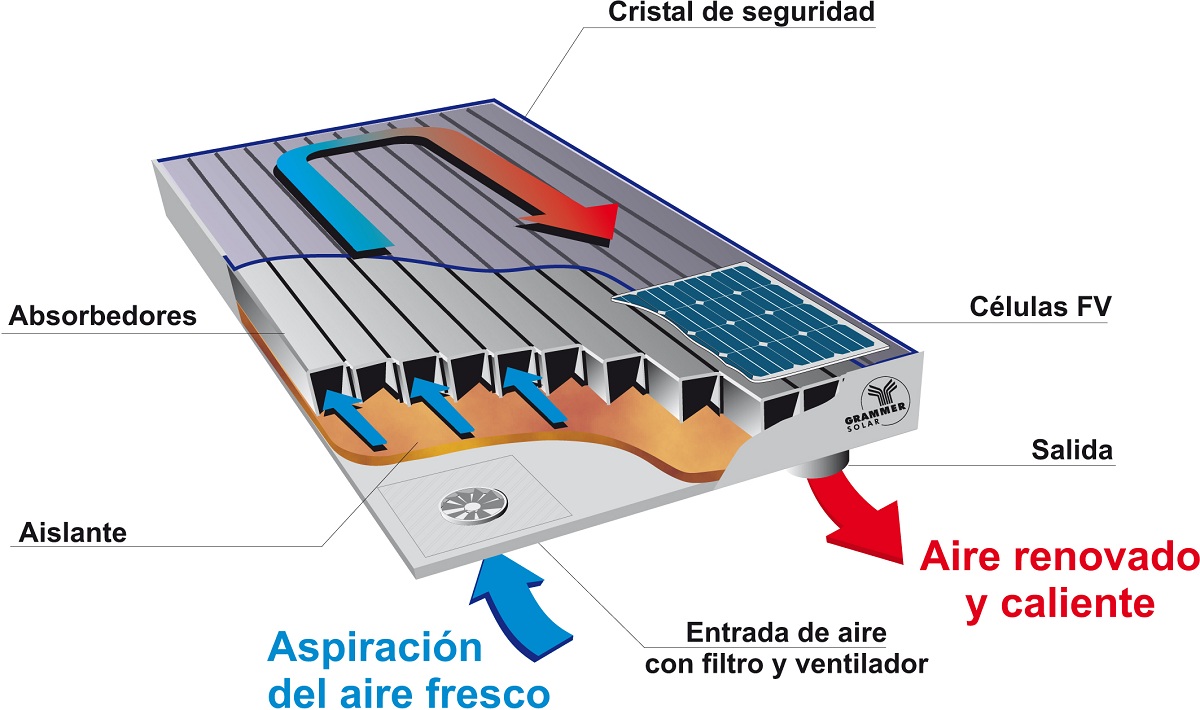
The solar collectors Thermal collectors, also known as solar thermal collectors, are an integral part of solar thermal installations. A solar collector is a type of solar panel that is responsible for capturing solar radiation and converting it into thermal energy. Therefore, this type of renewable energy is called solar thermal energy.
In this article we are going to tell you everything you need to know about solar collectors, their characteristics and uses.
What are solar collectors

The purpose of this type of solar panel is to convert energy: the solar radiation that the solar module experiences is converted into heat. In some types of solar thermal installations, this heat it is used to generate steam and obtain electricity, but this is not the function of a solar collector. On the other hand, photovoltaic panels have the ability to generate electricity directly in the form of direct current. Photovoltaic panels are an indispensable element in photovoltaic solar installations.
From a physical point of view, solar collectors use thermodynamics for energy conversion. In contrast, photovoltaic panels do not use the laws of thermodynamics to convert solar energy, but rather an electrical process.
Types of solar collectors

There are many types of solar collectors. The solar collector used will depend on its purpose. For example, if we want to heat a swimming pool to a temperature of 25-28 degrees Celsius in the spring, we need a simple solar collector, because the ambient temperature can easily reach this order of magnitude or even higher. On the other hand, if we want to heat the fluid to a temperature of 200ºC, we will need a concentrating solar collector to collect the solar radiation and transfer it to a small amount of fluid.
Currently, in the solar market, we can distinguish the following types of solar collectors:
- Flat or flat solar collectors. This type of solar panel captures the solar radiation that the surface receives to heat the fluid. The greenhouse effect is often used to capture heat.
- Solar collectors to capture solar radiation. This type of collector captures the radiation received on a relatively large surface and concentrates it on the smaller surface through a mirror.
- Solar collector with vacuum tube. This solar collector consists of a set of cylindrical tubes, made up of selective absorbers, located in the reflector seat and surrounded by a transparent glass cylinder.
In low temperature solar applications, mainly flat plate solar collectors are used. When the temperature of the working fluid is below 80ºC, it is considered that solar energy applications are carried out at low temperatures, such as swimming pool heating, domestic hot water production and even heating. These plates can be used without or without a glass cover, depending on the application.
Components of solar collectors

The standard solar collector is made up of the following elements:
- Top: The cover of the solar collector is transparent, it may or may not be. It is usually made of glass, although plastic is also used because it is cheaper and easier to handle, but it must be a special plastic. Its function is to minimize losses due to convection and radiation, so it must have the highest possible solar transmittance. The presence of the cover improves the thermodynamic performance of the solar panel.
- Air channel: It is a space (void or void) that separates the lining from the absorption board. It will be taken into account when calculating its thickness to balance the loss caused by convection and the high temperature that can occur if it is too narrow.
- Absorbent plate: The absorbent plate is an element that absorbs solar energy and transmits it to the liquid that circulates through the pipeline. The main characteristic of the board is that it must have high absorption of solar energy and low heat radiation. Since ordinary materials do not meet this requirement, combined materials are used to obtain the best absorption / emission ratio.
- Pipes or pipes: The pipes are in contact with absorption plates (sometimes welded) to exchange energy to the maximum. In the case of pipes, the liquid will heat up and enter the accumulation tank.
- Insulation layer: The purpose of the insulation layer is to cover the system to avoid and reduce losses. Because insulation is the best, the insulation material must have a low thermal conductivity to reduce the thermodynamic transfer of heat to the outside.
- Accumulator: The accumulator is an optional element, sometimes it is an integral part of the solar panel, in these cases it is usually located directly above or in the immediate visual field. In many cases, the battery is not part of the solar panel, but of the thermal system.
Uses
Solar collectors are mainly used to supply domestic hot water and heating or to generate electricity.
For domestic hot water and heating collectors, the water tank stores the domestic water in contact with the fluid through the coil. The coil allows the fluid to transfer stored thermal energy to the water without contaminating the water. This water can be used as domestic hot water (80% integration), and can also be used to supplement the underfloor heating of the room (10% integration). Thermal solar panels can provide a large amount of hot water, But due to the instability of solar energy, they cannot completely replace the usual heating methods.
Solar collectors used to generate electricity need to heat the heat exchanger to a boil. Once the liquid completes the thermodynamic phase change and enters the gas phase, it is sent to the thermoelectric turbine, which converts the movement of water vapor into electricity. This type of system is called solar thermodynamics and it requires a lot of space to install solar panels and a continuous sun. Examples of these plants have been installed in the desert.
When defining and installing solar thermal installations, it must be taken into account that the solar collectors must be distributed in groups. These groups of solar collectors they should always be made up of units of the same model and distributed as evenly as possible. There are two basic options or types to group two or more collectors: series or parallel. In addition, the water collection area can be configured by combining two groups, which is what we call grouped or hybrid circuits.
I hope that with this information you can learn more about solar collectors and their characteristics.